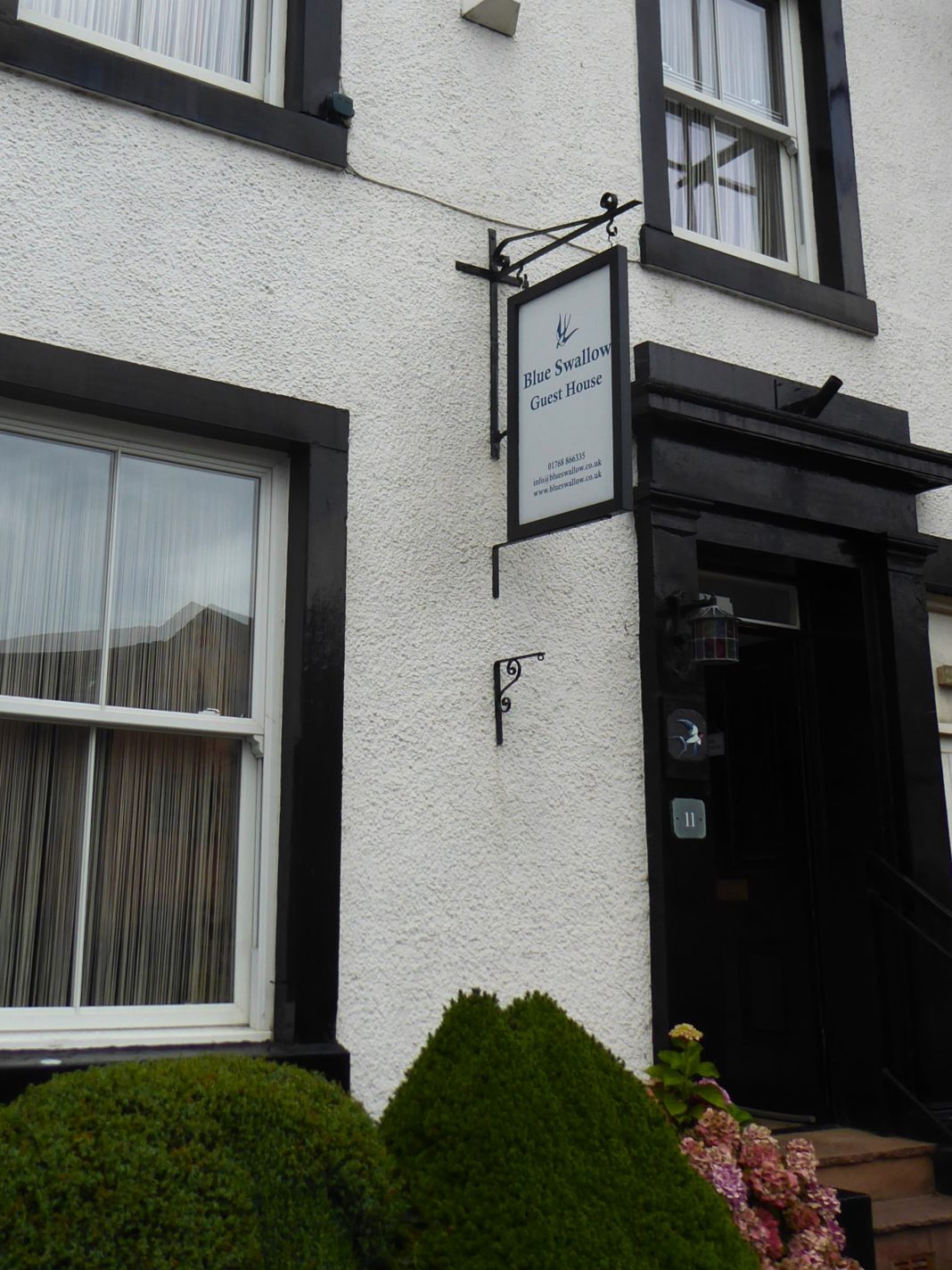One of the books I bought from Verey’s excellent shop in Pooley Bridge was a guide to stone circles in the Lakes. It transpires there are two circular early bronze age structures right next to the motorway as it passes Penrith. Though not technically stone circles they must be worth looking at. With a bit more delving I find a walk encompassing them as well as Brougham Castle and Hall.
I think I mentioned the base of a medieval cross on land next to where I catch my bus each day. It turns out to be grade II* listed and described as possibly used as a plague stone in the C14th. 
The Dog Beck, Wetherspoons, where I supped a pint most nights last week also turns out to be an early C19th Grade II listed building. Was it originally an inn? I’m now able to say my drinking was for historical research purposes. 
I have already looked around the remains of Penrith Castle but sadly not explored the old market town more thoroughly. One can’t do everything. But on my last morning I catch the 9 o’clock bus for the last time this trip. I only go a few stops to Eamont Bridge, here I pick up the trail.

King Arthur’s Round Table is marked on the map but the Henge circle is thousands of years older than him. A gateway gives access to the circle in a rough field right next to the road. In fact the road has cut across the northern side of the circle. I wander around trying to take photos that show up the banking. 



Across the way is a slip road signed to Mayburgh Henge, I had passed it daily on the bus and noticed a large Millennium Stone on a verge.
From the visit Cumbria site –
“This fifty tonne block of granite was transported from Shap quarry, erected here and dedicated on July 2nd 2000 by the Bishop of Penrith at the culmination of the Eden Millennium Festival.
The site was chosen because of its association with neighbouring Mayburgh Henge. The granite is 330 million years old, and the Monument is intended to last thousands of years.
In a trench round the base are buried about 2,000 small stones decorated mostly by primary school children of Eden and placed there at the dedication service as birthday presents for Jesus’ 2000th birthday.
The carved symbols on three sides of the Monument are an Alpha, a Cross with the number 2000, and an Omega. The Alpha and the Omega are the first and last letters of the Greek alphabet and represent the beginning and the end, the past and the future, God the Creator and God the Holy Spirit. The Cross and the 2000 represent the present, 2,000 years of Christianity, and Jesus Christ our Lord alive with us today”



On the side road right next to the motorway was the gate giving access to Mayburgh Henge.

This is a much larger banked circular Henge . The banking is up to 20ft high and is composed of millions of pebbles from the nearby River Lowther.

 One only sees the large central standing stone once on the banking or from the eastern entrance.
One only sees the large central standing stone once on the banking or from the eastern entrance.




Looking at older documents there were four standing stones in place in the C18th. It is thought that these henges, there was a smaller one close by, were possibly meeting places or Neolithic ceremonial centres. It is difficult to appreciate their size and shape on the ground, aerial photos are needed.

Visit Cumbria’s image.
I cross the River Eamont not on the grade1 listed late medieval structure, but by the utilitarian metal foot bridge alongside.

A pleasant interlude of walking alongside the river follows. At one point I spot the abutments of a footbridge across the Eamont, has it been washed away in recent times?


Up ahead I catch the first glimpses of Brougham Castle. bruam is the local pronunciation. The castle was founded in the early 13th century. The site, near the confluence of the rivers Eamont and Lowther, had been previously chosen by the Romans for a fort called Brocavum. It has a long and convoluted history. Lady Anne Clifford who inherited it, along with a string of other castles in the area that she had refurbished, died at Brougham Castle in 1676. I only gaze at the remains across the river as I don’t have time for a lengthy visit. It shows off the local red sandstone.



I almost forget to look for the Roman Fort on the same site and my photographs are not that convincing of its foundations.


Not far along the lane is the entrance to Brougham Hall, a fortified home from the early C14th. Again one can read the history here. Privately owned, its restoration work is slow but some areas have been made habitable. Space is rented off to various artists and potters. One can wander over most of the site and hence get a feel for past living in such spaces. There is an honesty café so I’m able to get my late morning caffeine fix. 








Back across the Eamont and I can catch a bus directly to Penrith Station for the train home.
I’ve enjoyed this mini break, reacquainting myself with the Northern Lake District, delving into a bit of history along the way. The weather has been kind to me and my B and B, The Blue Swallow to give them a shout, in Penrith was perfect. 















